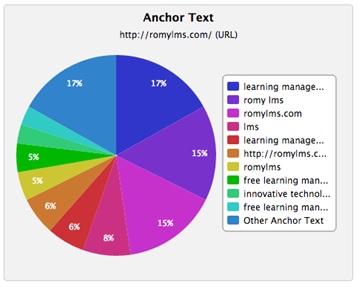
Having a diverse and organically built backlink profile is a major SEO asset for any organization or company looking to increase their visibility and sales online. From mentions on high-authority websites and forums to features in relevant industry blogs and publications, it’s important for any business to analyze and strategize on high-quality link-building in order for search engines to prioritize your site as a leader in your field.
So, where do you begin?
Set Your Goals
As you get a deeper understanding of where your link profile stands, you’ll be able to develop a nuanced strategy for building links that are both valuable to your site’s SEO and relevant to your business. While tools like Majestic, Moz, or Screaming Frog are important in helping you coalesce data, they won’t be able to tell you which bloggers to cultivate a relationship with or which of your blog posts may go viral.
Think about the goals you’re setting and how link building will help you get there. Are you looking for more traffic in order to gain influence among readers online? Are you looking to generate sales for products through your eCommerce site?
Once you’ve identified your goals, it’s time to let your data lead the way. This is where a resource like Majestic comes in. With comprehensive analytical tools and features at your disposal, it’s easy to see where links are coming from and identify broken links, optimize anchor text, scout new sources for links, and examine competitors’ profiles.
Let’s take a look at how any online entrepreneur can use these tools in order to improve organic links.
Find Where Inbound Links Come From
A vital step in improving your link profile is evaluating where inbound links are coming from in the first place. By looking at a thorough breakdown such as Majestic’s Backlinks Report, you can find instances of inbound links and external sources that contain links to the target site. Ideally, the perfect SEO link should contain one IP (website), which is directed to one site via an organic link.
However, it’s important to keep in mind that Google’s Penguin update was created to penalize webmasters that built overly spammy or promotional links and profiles. So, take into consideration how Majestic compiles a list of inbound links depending on which site you’re optimizing. Based on metrics like trust and citation flow, you’ll be able to see which sites you should be targeting for links.
Let’s take a look at some inbound links for a German multinational company that specializes in educational furniture. As seen above, the first three linking URLs come from sites that are topically relevant, like architectural or interior design websites; however, their primary trust flow scores are a bit low and the second link appears to be from a competing site. Based on this report, it would benefit this company to reach out to higher authority industry publications like Architectural Digest or even educational journals that discuss school classroom design.
Once this company has compiled a list of links, they’ll be able to analyze which ones were optimal, which links they’d like to regain, and even target sites for further links depending on past metrics.
Optimize the Anchor Text
Since link-building works in tandem with on-site SEO optimization, knowing the anchor text ratio of all inbound links is an important factor for increasing the rankings of targeted primary and secondary keywords. By analyzing your anchor text, you can easily collect this data in order to optimize your anchor text ratios.
Consider Romy LMS, an intuitively designed learning management system designed to keep workplace training scalable and engaging. In terms of an anchor text ratio, Romy LMS could be in a more ideal place, as explained by this SEM Rush article on anchor text optimization.
 As the largest segment of this pie chart, branded anchor text is simply a company name that’s an exact match to its URL. According to SEM Rush, this should constitute around 40%. As seen on the pie chart, “Romy LMS” only comprises 15%. From this simple analysis, it’s clear that this company’s anchor text ratio is on the right path as its branded anchor makes up one of its largest segments. However, they’ll have to make sure to use their company name as a link more consistently.
As the largest segment of this pie chart, branded anchor text is simply a company name that’s an exact match to its URL. According to SEM Rush, this should constitute around 40%. As seen on the pie chart, “Romy LMS” only comprises 15%. From this simple analysis, it’s clear that this company’s anchor text ratio is on the right path as its branded anchor makes up one of its largest segments. However, they’ll have to make sure to use their company name as a link more consistently.
Ultimately, it’s also important to keep anchors varied and relevant. In order for anchor texts to benefit your link building efforts, content with inbound links and anchors should complement your on-site keywords. Features and articles that discuss your company should use your branded anchor texts, while how-to guides and authoritative posts on your industry should use more generic terms.
Find 404 Broken Links & Regain Inbound Values
If the final destination of a link points to a 404 Not Found HTTP request page, there is no link value passed from the linking site to the final destination. In order to retain this value, all backlinks should point to valid 200 OK HTTP response locations (pages).
If you’ve collected all of your inbound links in bulk, other tools such as Screaming Frog can help determine the HTTP response of the targeted page. From there, you’ll be able to spot all of the 404s and regain link value with 301 redirects to new, valid 200 OK destinations.
Track Competitors’ Inbound Profiles
A crucial part of managing a successful business—both online and in a brick-and-mortar setting—is having a thorough and complete analysis of where you stand against your competition.
Nowhere is this more relevant than in the highly competitive women’s fashion market. With apparel companies of all sizes, organic SEO for independent retailers is always an uphill battle against eCommerce behemoths like Nordstrom, Neiman Marcus, and even fast-fashion giants like H&M and Zara. Building authority within this industry requires constant and vigilant attention to competitors’ marketing efforts.
Let’s look at five independent fashion boutiques and assess how their links compare.
With a basic comparison, it’s clear that one company is placing a high priority on link building, with 11,849 external backlinks built and 173 referring domains. However, the leading company’s trust and citation flow scores are still at par with their competitors. They’re on the right path, but with the influence they’ve built, they should be able to shoot for more authoritative links with high profile bloggers, celebrities, and fashion news outlets.
Build Organic Links
Ultimately, analytical tools are great resources for helping companies identify their strengths, as well as points for improvement within their inbound link profile. However, while they can gather all the necessary data, entrepreneurs should formulate promotional outreach strategies that work specifically for their organizations.
If businesses want to entice users and customers, they’ll need to provide engaging, relevant content that excites readers and customers. They should also cultivate and develop relationships with bloggers and webmasters relevant to their industries, as well as utilize tools like Majestic as a compass for finding the best linking opportunities.
Author Bio: Joel Gross is the founder and CEO of Coalition Technologies, the #1 ranking SEO and web design company in Los Angeles with 80 full time team members.
- How Online Companies Can Develop Nuanced Link Building - March 28, 2017









Great article! A lot of helpful resources in there!
March 28, 2017 at 7:13 pmLos Angeles SEO and web design company – dat anchor text tho
March 29, 2017 at 8:12 am